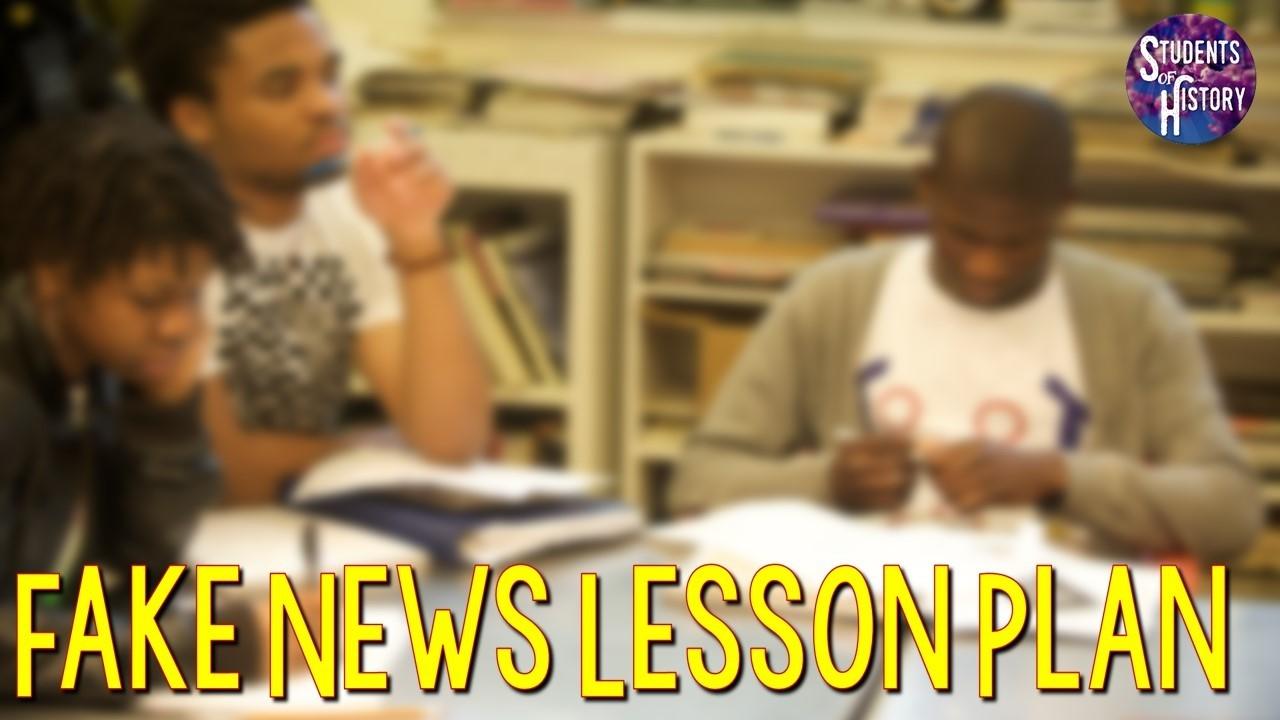Fake News Lesson Plan

One of the most important things kids need to learn now in social studies is about Fake News”. Obviously, you hear about Fake News all the time. It dominates social media and the news outlets.
Kids need to be able to recognize what is fake news, what is real news, and how can you tell the difference. This is a 21st century skill that every kid needs to learn in high school. It's so important for our society to teach these kinds of skills so that kids can graduate with the ability to be informed citizens.
I teach this lesson about fake news in both my US history and my American government classes.
I love this lesson because it connects students to fake news in history from the Yellow Journalism era of the late 1800’s early 1900s’ in American history and also the fake news of today.
The Lesson Plan
I start the lesson off with a warm-up cartoon from the yellow journalism era and ask students to interpret it. Then we look at for glaring examples of fake news from today. I asked students how they can tell each one is fake news and what jumps out at them about each article. We'll put this up on the board and come up with a list of characteristics that fake news generally has.
After we have a good list, I give students a guided notes worksheet for their notebooks and we’ll go through a PowerPoint on Fake News. The presentation helps kids to understand the role of the media in society, identifying bias in news and media content, and what really is fake news (biggest point: it’s not just news you don’t like or disagree with!!).
Collaborative Group Activity
Following this, students will work in Collaborative Learning groups to analyze a current event. For this, I asked students about what are some current events going on in the world today. We'll make a small list and then pick one of the events that we want to use. It can really be anything depending on what is going on in the news right now. Students get to decide which one they want to look at. We’ll then use online search tools to look through news websites and find a variety of articles on that topic.
There's a printable worksheet and a Google doc for this that students can use. The kids work together to find trustworthy articles about the topic and some articles that aren't so trustworthy. Will then compare the two of them and see how they can tell what is trustworthy and what is not. This can help them to understand what really makes something fake news.
This helps generate a great class discussion. Students often have a variety of opinions about this and it's a great way to get students all talking and sharing in a respectful manner.
Homework and Extension
We finish up with a fun homework assignment. Students have to watch TV! I provide students with a compare and contrast worksheet comparing MSNBC and Fox News. They have to go home and watch a few minutes of each Channel. They take notes on what they see. The content, the chyrons, opinions, events covered, etc.
Overall, this is an awesome lesson to help students develop media literacy and to understand the dangers of fake news. You can download the lesson plan here or get it as part of my American Government curriculum here.

Want to try some lessons for free?
Try out some free lesson plans and resources for your social studies classroom!
Don't worry, your information is never shared.